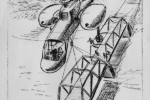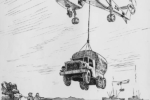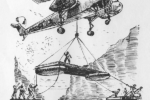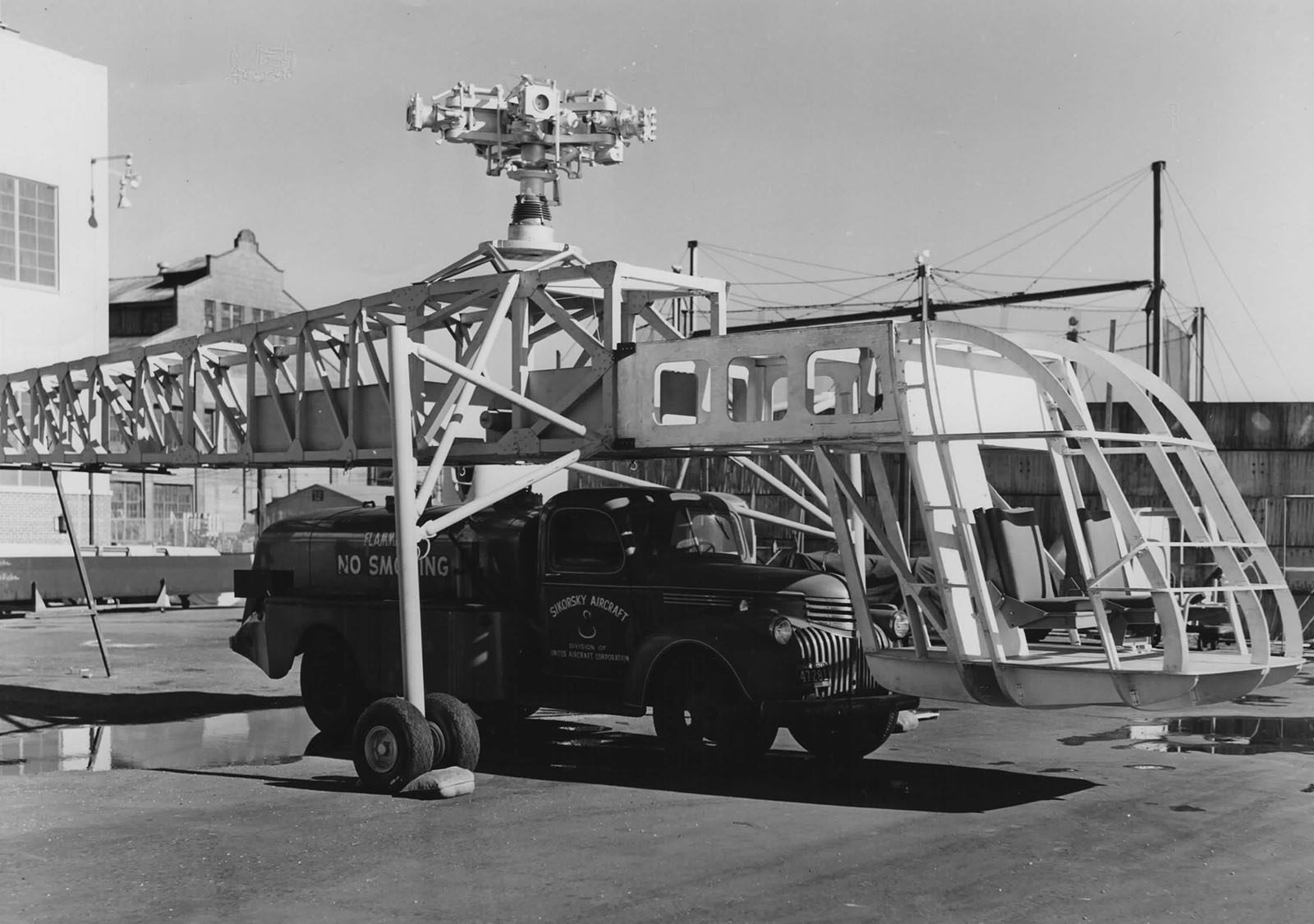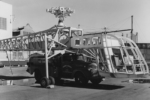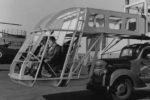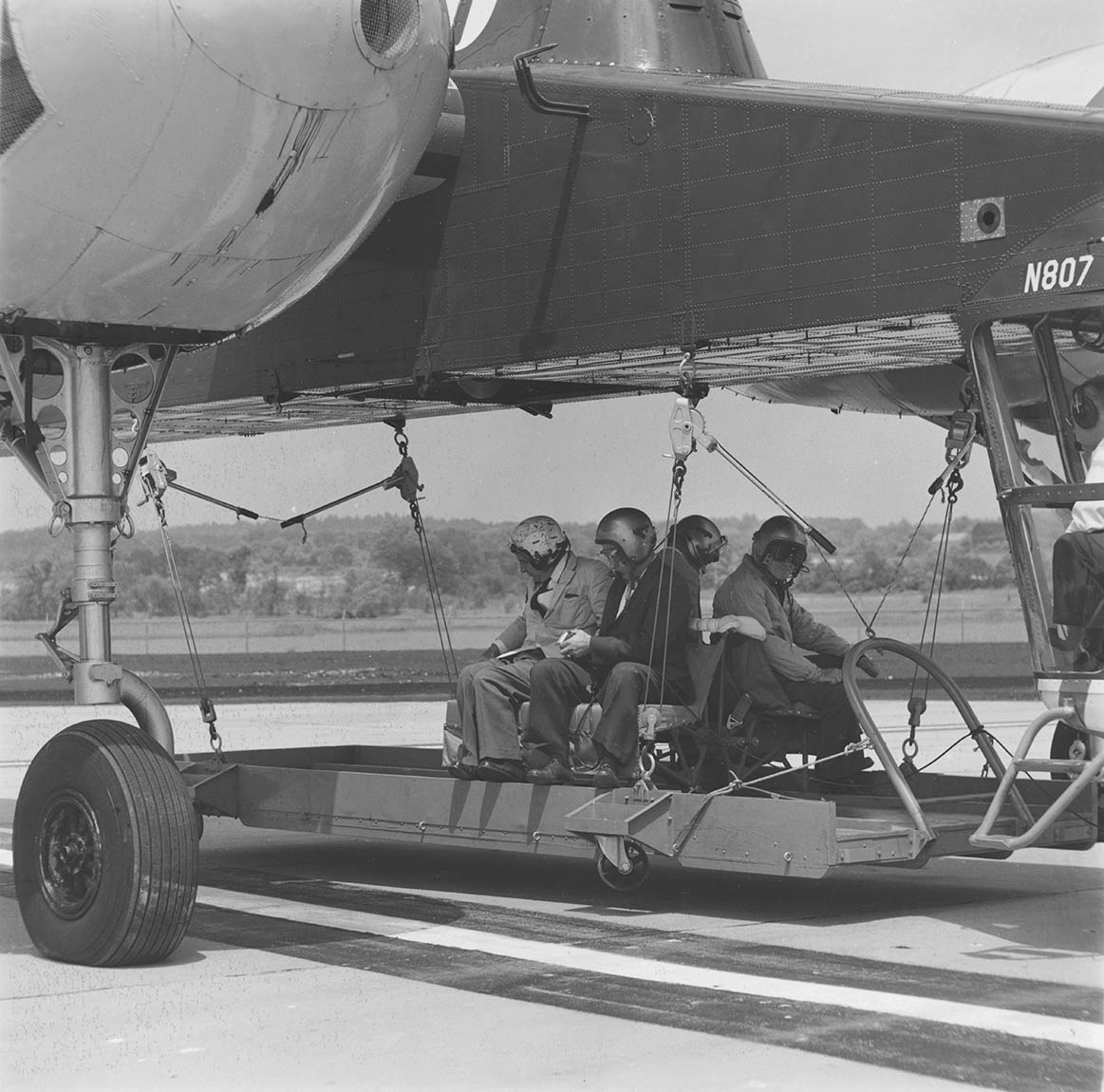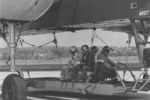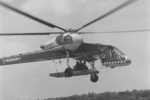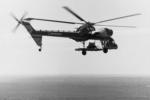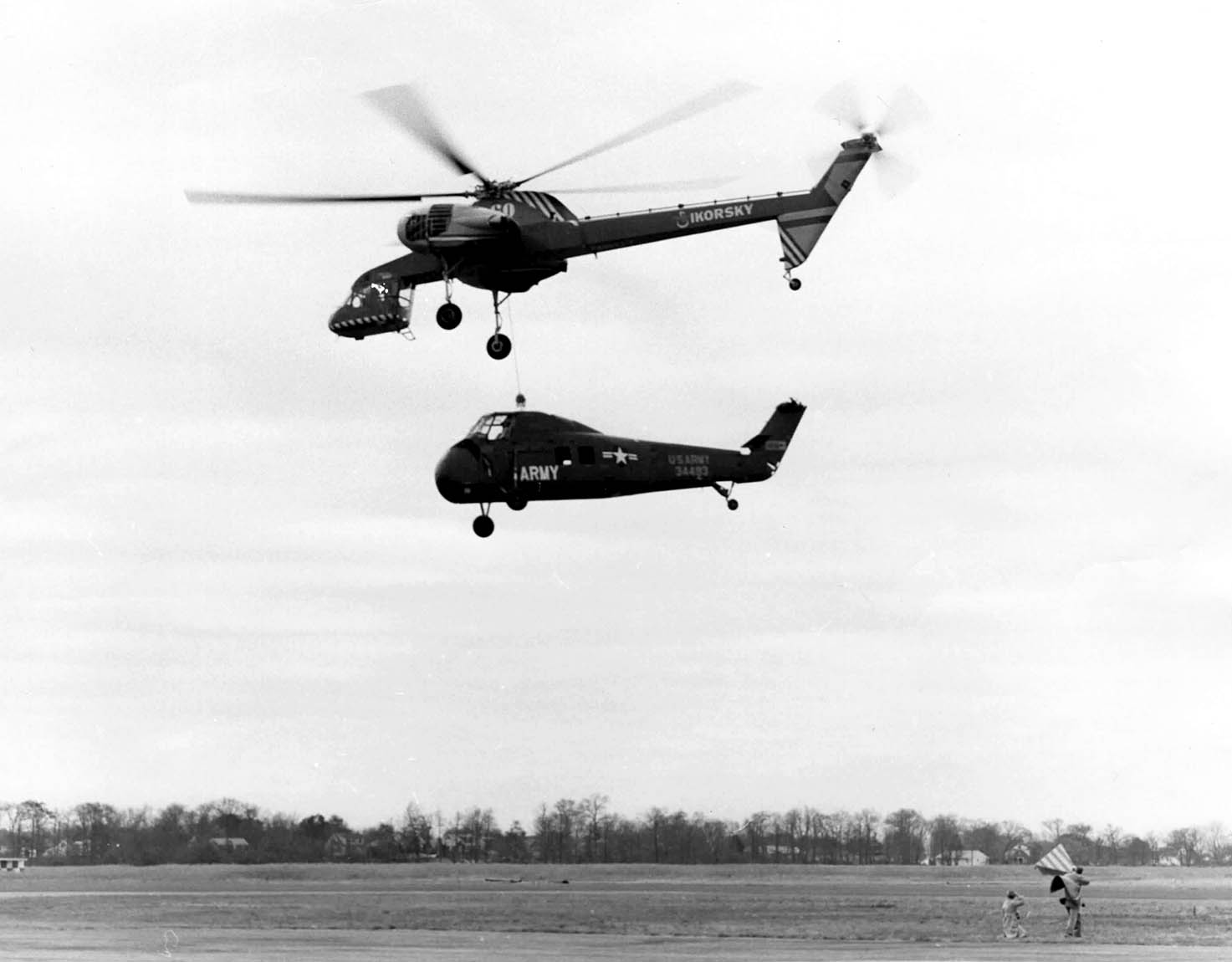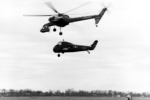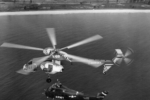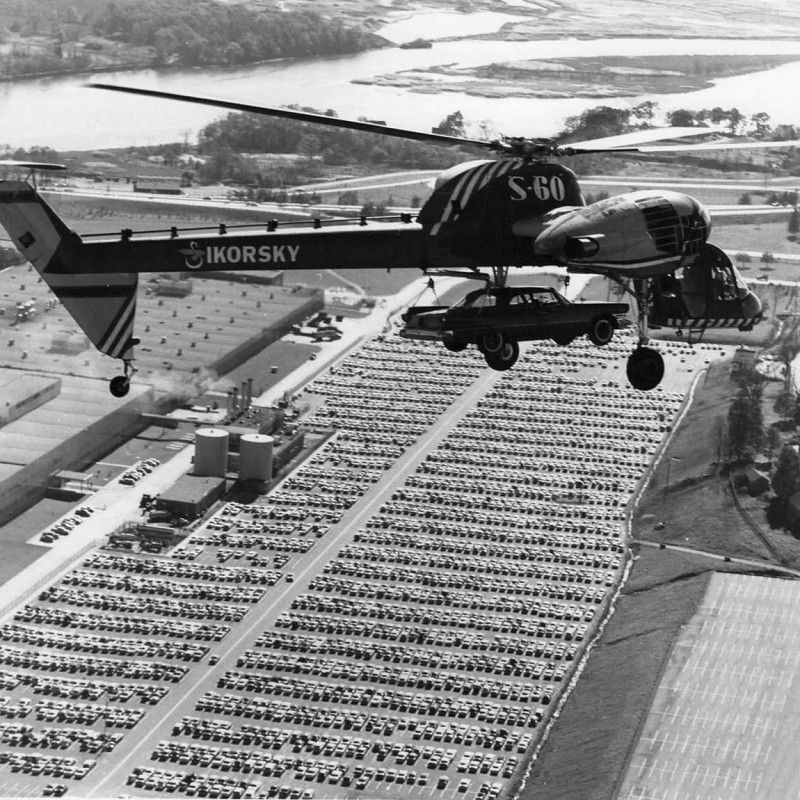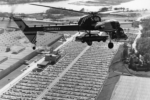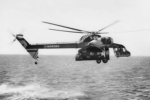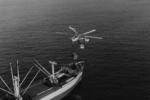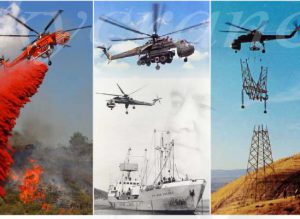Sikorsky Product History
Sikorsky S-60
Background
In 1955 Igor Sikorsky first talked publicly about his vision for a “crane” type of helicopter that would carry its cargo externally rather than in an internal cargo compartment. The fuselage would be a simple “stick” structure carrying the mechanical systems with the cockpit suspended below. Mr. Sikorsky’s idea was that with an aft-facing pilot’s station, the pilot would have unrestricted visibility during cargo attachment/detachment and while maneuvering the load to precise positions. Payloads would not be restricted by cabin size. And, due to the simplicity of the aircraft, it would have lower production and operational costs.
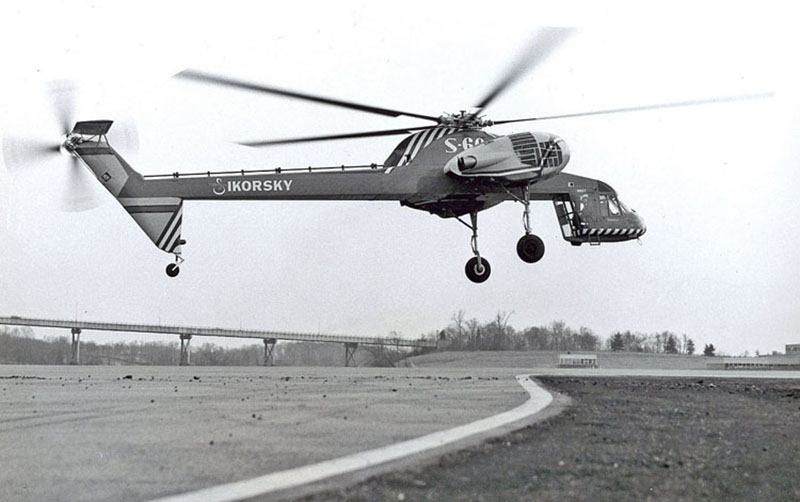
The January 1958 issue of United Aircraft’s internal magazine The Bee-Hive contained an article titled “Tomorrow’s Flying Cranes.”, written by Frank J. Delear. This related Sikorsky’s plans to develop a helicopter uniquely designed without a cabin to carry all loads externally. The success of recent operations using the Sikorsky S-58 to carry power lines was related – 63 poles were planted in steep, almost inaccessible mountain terrain in less than two days. Conventional methods would have required 65 days. Other similar examples were also mentioned.
The crane helicopter envisioned by Igor Sikorsky would offer three vital advantages. In order of importance he said they were:
1) Completely unobstructed vision for the pilot, allowing him to observe the entire operation of picking up or delivering cargos. This would mean windows all around, and probably dual pilots’ seats, one facing forward and one aft.
2) A configuration permitting not only picking up while hovering, but also attaching such objects as trucks and tanks, or very long objects such as posts, lumber, and piping to the aircraft while it is parked on the ground. And,
3) A greater payload, in equivalent numbers, and a lower production cost than the present cabin helicopter.
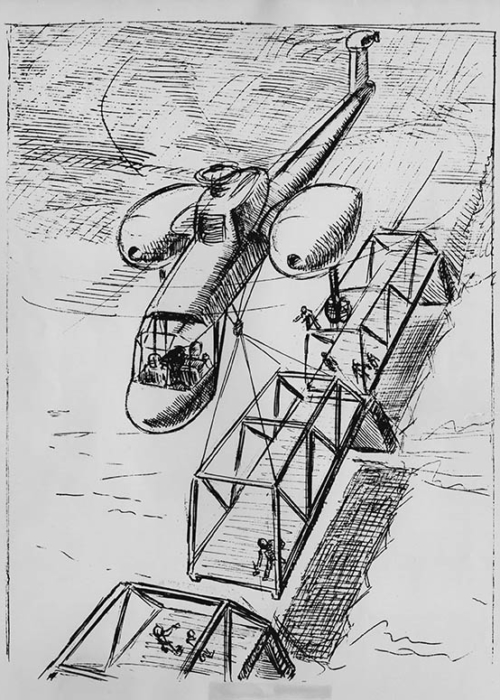 These drawings from the January 1958 issue of United Aircraft’s Bee Hive magazine were drawn by Sergei Sikorsky, Igor’s son, after a lengthy discussion with his father about the Skycrane concept.
These drawings from the January 1958 issue of United Aircraft’s Bee Hive magazine were drawn by Sergei Sikorsky, Igor’s son, after a lengthy discussion with his father about the Skycrane concept. These drawings from the January 1958 issue of United Aircraft’s Bee Hive magazine were drawn by Sergei Sikorsky, Igor’s son, after a lengthy discussion with his father about the Skycrane concept.
These drawings from the January 1958 issue of United Aircraft’s Bee Hive magazine were drawn by Sergei Sikorsky, Igor’s son, after a lengthy discussion with his father about the Skycrane concept. These drawings from the January 1958 issue of United Aircraft’s Bee Hive magazine were drawn by Sergei Sikorsky, Igor’s son, after a lengthy discussion with his father about the Skycrane concept.
These drawings from the January 1958 issue of United Aircraft’s Bee Hive magazine were drawn by Sergei Sikorsky, Igor’s son, after a lengthy discussion with his father about the Skycrane concept.
The drawings shown in the Bee Hive were drawn by Sergei Sikorsky, Igor’s son, in 1957 after a lengthy discussion with his father about the crane concept. They show what Sergei describes as an “advanced S-60 crane”. It used the dynamic components of the S-56 and was powered by the R-2800 engines of the S-56, but in Mr. Sikorsky’s imagination he had redesigned the landing gear into a tricycle configuration for easier ground handling over a load.
In 1956 Mr. Sikorsky had a full-size mockup of such a vehicle, using the dynamic components of the S-56 constructed for evaluation.
One of the key tasks for the mockup was to investigate the concept of the reversible cockpit seat which was to rotate 180º for pickup and release of the load. In these photos Ed Katzenberger, Sikorsky Chief of Advanced Design and George Howard, Head of the Advanced Concepts Group try the proposed approach.
The concept was proposed to United Aircraft Corporation management (now United Technologies Corporation) and funding for design and fabricatiaon was approved for an experimental aircraft to evaluate the concept. Design was initiated on May 1, 1958. Fabrication was completed by March 18, 1959, and the first flight date was March 25, 1959.
The aircraft used the propulsion, rotor and dynamic systems from the Sikorsky S-56 (Marine Corps HR2S-1 and the Army H-37A). Those S-56 components were bailed from the U.S. Navy Bureau of Aeronautics.
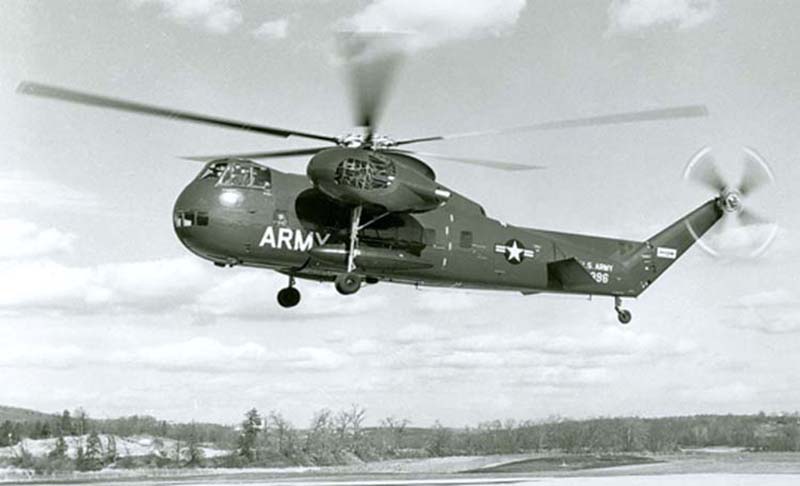
Ten days after first flight it was demonstrated at Fort Bragg. Total flight time in these ten days was 22 hours and 45 minutes.
In the next three months the S-60 was demonstrated to UAC stockholder, the press, and the German Military Group, and at the Marine Corps Air Station in Quantico, Virginia, the AAAA meeting in Washington, D.C., the Naval Post Graduate School, and the AHS meeting in Stratford, Connecticut.
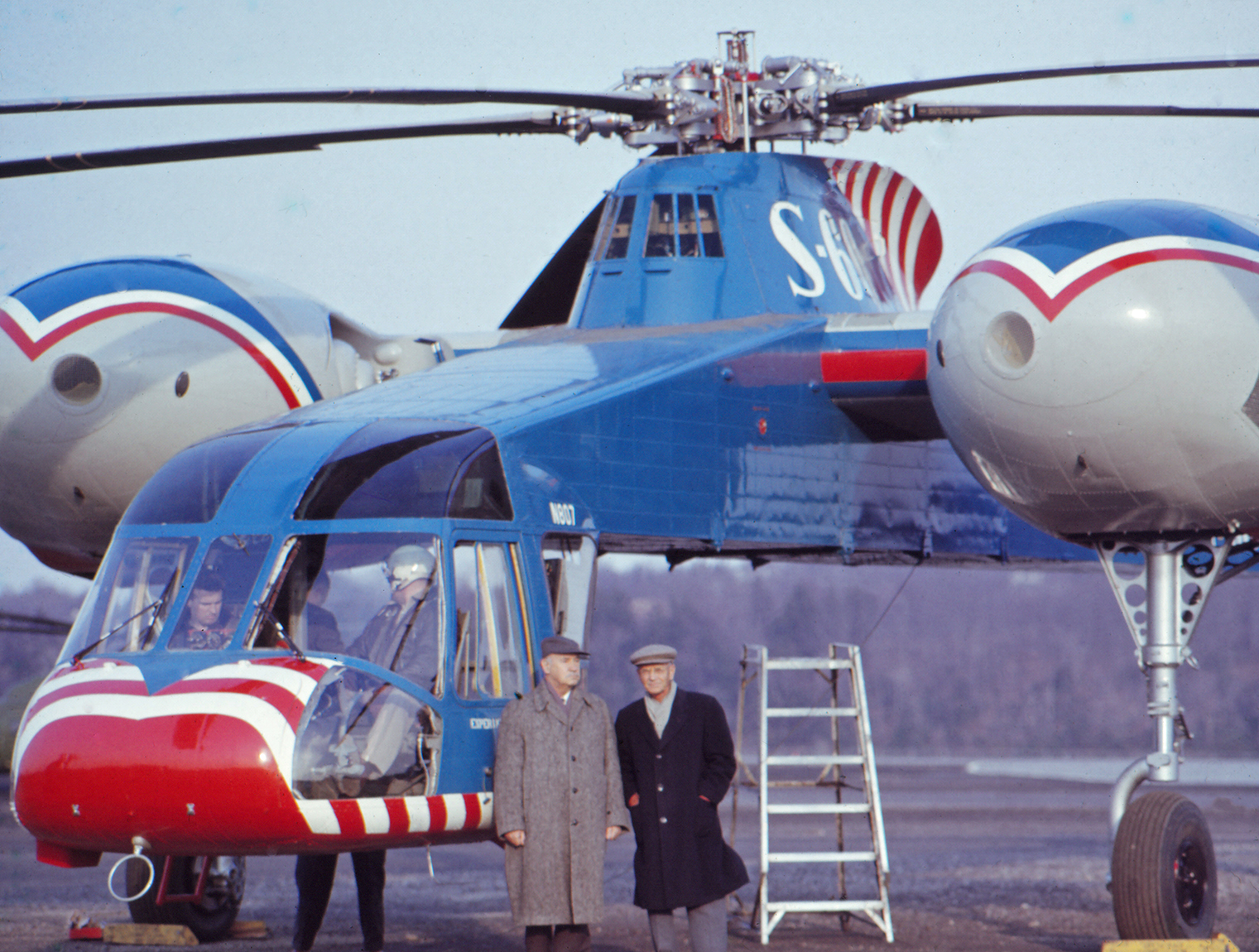
In July, passengers were carried on a platform beneath the aircraft. In one initial test, Mr. Sikorsky invited three others to join him for a flight on the platform. These were Rod Smith, project engineer, C.M. (“Chevy”) Echeverria, program manager, and J.P.W. Vest, engineering vice president. Chairs were bolted to the platform and seat belts were provided. At one point, Mr. Sikorsky unbuckled his belt and walked over to the edge of the platform to look down. The others did not join him! The pilots, Jack Peterson and Jim Kay, were monitoring this and flew as carefully and calmly as possible.
Cargo carrying techniques were also investigated. August saw the demonstration of a twenty passenger pod, then more demonstrations at military and other government installations through November.
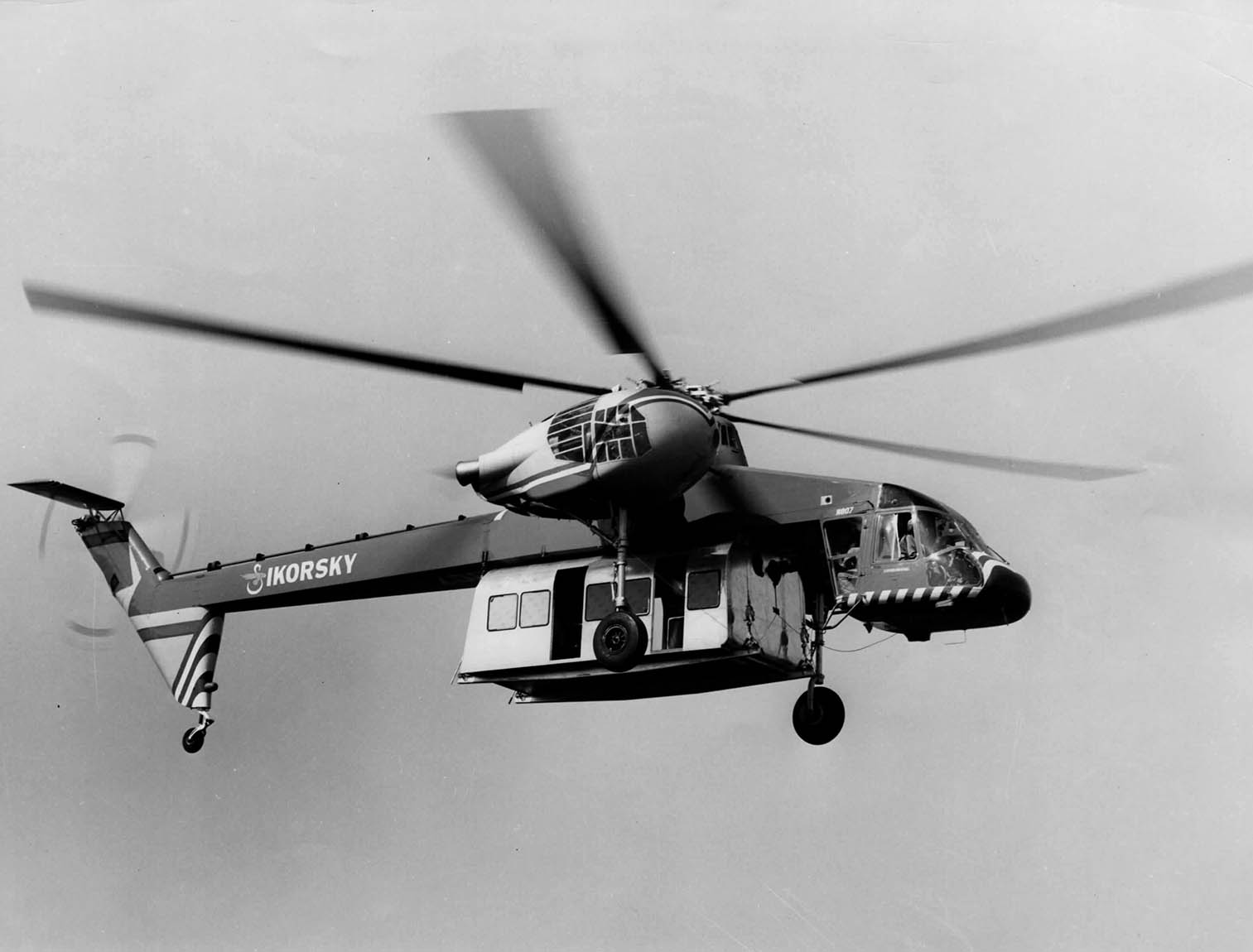
Also in November it airlifted 16 Sikorsky H-34 (S-58) aircraft in various states of overhaul from the Bridgeport airport to the Sikorsky’s South Avenue plant in Bridgeport. Total flight time by then was 165 hours, 36 minutes.
A great deal of work was accomplished in carrying various types of cargo, in developing techniques and handling equipment, and investigating night operations. With very little practice, it was found that it was possible to land and release one load, hop over to a second load, hookup and take-off within 60 seconds. This surpassed the capabilities of any other aircraft, and in many cases surpassed the capabilities of a truck.
While carrying personnel on the platform and in the pod, it was discovered that vibration-free transportation could be provided very simply. In these preliminary tests, simple bungee chords provided complete vibration isolation for the pods. This was considered very significant because it greatly improved passenger comfort in a very simple manner. Subsequent study and design produced an attachment system which used hydraulics to provide both load pickup and vibration isolation.
1960 brought more demonstrations, and further development of cargo carrying techniques, mine sweeping and towing, and the hoist system. Tests continued into 1961 with a total of 335 flight hours accumulated by April 1, 1961, about two years since the first flight.
It was concluded that the S-60 performance was generally the same as the conventional S-56. The effect of external loads on the speed and range was a function of the size and shape of the load. The behavior of loads suspended from a single point was is some cases erratic, but since the rear facing pilot could see the action of these loads, it was always possible through normal good judgment to adjust the airspeed to a figure where a particular load would behave satisfactorily, or in other cases to adjust the length of the hoist cable to correct the problem. There were no problems experienced with loads carried by the multi-point suspension system.
The S-60 could carry up to 1,000 pounds more cargo than the S-56 because it was 1,000 pounds lighter. It performed mine sweeping operations which could not be accomplished on any existing aircraft at that time. Towing was done with the basic aircraft without the use of special tow kits or provisions which were then required on existing helicopters. A passenger pod to carry 40 people was envisioned which would exceed the capacity of the S-56.
In January 1961 Sikorsky Aircraft and the National Aeronautics and Space Administration entered into a contract whereby the Contractor would modify the control system to permit adjustment of the control sensitivity through a range of one-half to twice sensitivity in order to permit an evaluation of the effect of control sensitivity on the ability of the aircraft to perform precision low speed maneuvers. During a check-out flight on April 3, 1961 prior to delivery to NASA, with the controls adjusted to twice normal sensitivity, the aircraft became unmanageable and crashed on the Sikorsky flight field. The pilots were uninjured but the aircraft was damaged beyond economical repair.
The aircraft performed more than 335 hours of flight testing, evaluating the crane concept.
The success of the S-60 led to the development of the Sikorsky S-64 Skycrane, a turbinized aircraft more suitable for production. The S-64 is described in another Sikorsky Product History section of this website.
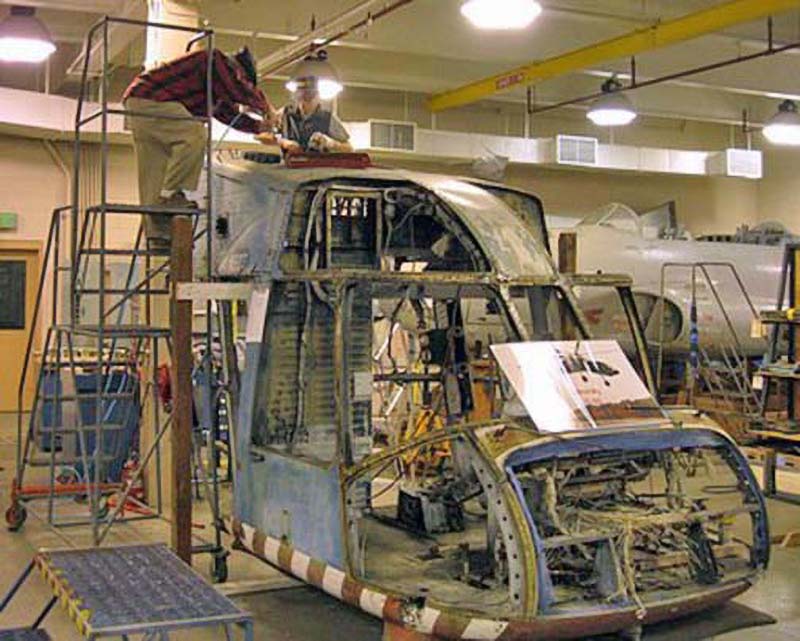
The aircraft is currently at the Connecticut Air and Space Museum in Stratford Connecticut (not associated with Sikorsky Aircraft) where it is being restored.
Configuration Features
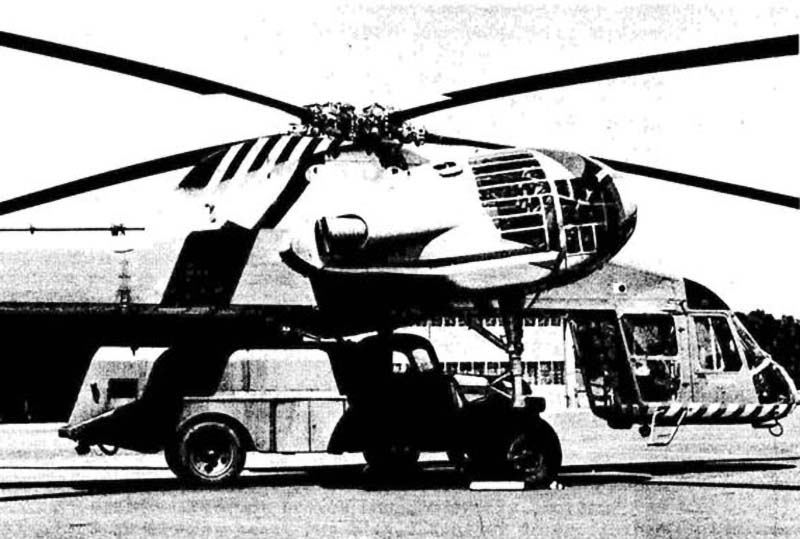
The primary feature of the aircraft configuration is the “stick” fuselage with the cargo carried externally. This permitted an aft facing cockpit station so that the pilot had a full view of the cargo and the loading and unloading operation. In addition, the aircraft could carry any load, regardless of size and shape, within its weight capability. The configuration allowed the aircraft to land over most loads. Thus cargo hookups could be made without interference from rotor downwash and static electricity hazards. This allowed a taxi capability with the load attached and provided a capability for emergency landing without jettisoning the load. Take-off in ground effect could be accomplished, thus increasing potential payload weight. And, most important, the time required to attach and detach loads was greatly reduced from that of a conventional cargo aircraft.
In the design of the cockpit, pilot visibility was considered of utmost importance. For proficiency and speed when attaching, detaching and maneuvering the cargo, the pilot must see what he is doing rather than rely on second hand information relayed by intercom or ground crew signals. To this end, the cockpit was suspended below the main part of the fuselage and the pilot was provided with a swivel seat and two sets of controls. Thus the pilot could operate the aircraft facing rearwards with cargo and landing site in full view. Early in the program it was recognized that the cyclic stick, the rudder pedals and the pilot’s feet obstructed the pilot’s vision of the load being picked up when this load was more than 20 feet below the cockpit floor level. This problem was eliminated by incorporating a three-axis limited authority arm rest stick to provide the pitch, roll and yaw control for the pilot when in the rear facing position, thus allowing the removal of the cyclic stick and the rudder pedals and allowing the pilot to position his feet out of the desired line of vision. The copilot was provided with conventional forward facing controls.
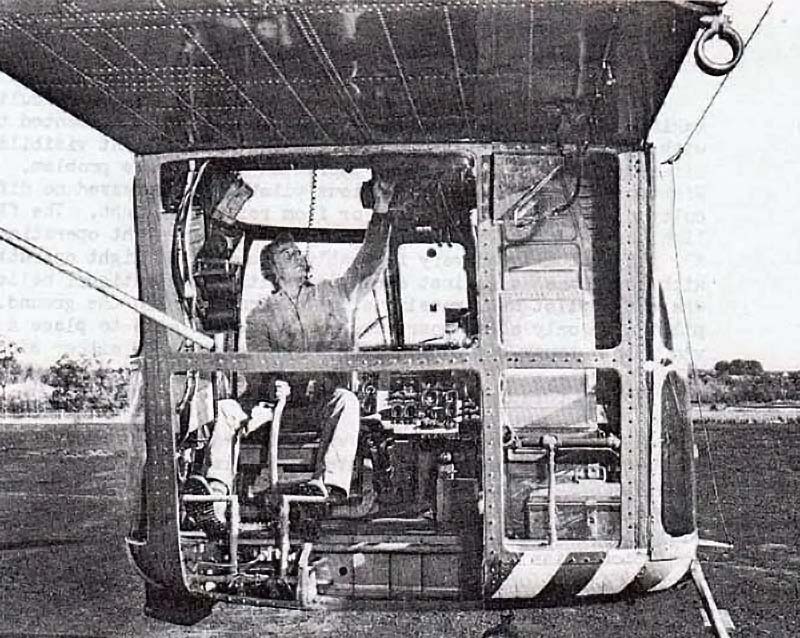
The main landing gear was designed with large diameter wheels to provide reasonable landing and taxiing characteristics in rough unprepared areas. A capability to kneel the gear six inches was included. Otherwise the gear was similar to the production S-56 and mounted on S-56 wing and support structure.
The engines, transmissions and rotors were all S-56 components. A basic ASE (Automatic Stabilization Equipment) was installed to monitor pitch, roll and yaw with provisions for altitude and tether controls. The standard flight and control instruments were used for both the pilot and copilot. RPM, MAP, and altitude instruments were provided for the aft facing position.
General Arrangement Drawing
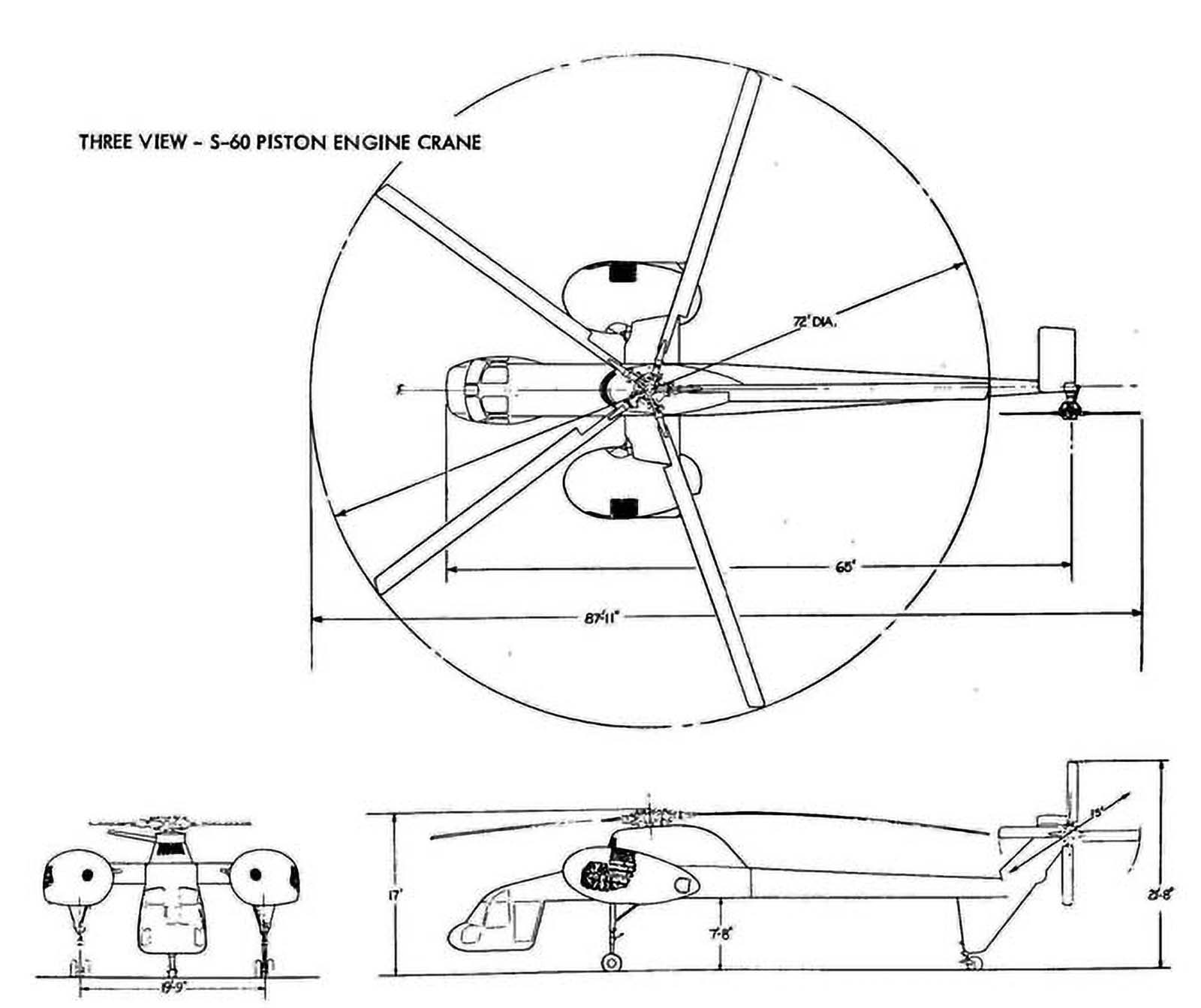
This early general arrangement drawing shows the dual main wheels from the S-60. As actually built, the aircraft used larger single wheels.
Mission Systems
A series of ten hard points were provided along the bottom of the fuselage to which any load might be secured quickly, safely, and under the scrutiny of the pilot. During the course of evaluation, additional points were provided on the fuselage and on the wing.
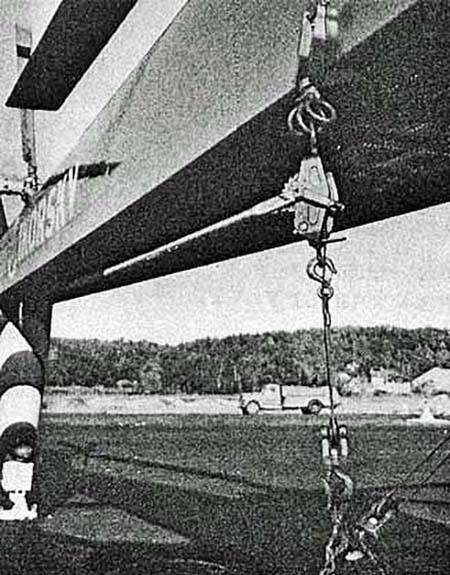
To provide pickup capabilities where the load was too large or bulky to fit under the crane, or where pickup or delivery sites precluded landing the helicopter, a 12,000 pound capacity hoist was provided with 100 feet of cable. This was mounted in the fuselage under the transmission and approximately at the center of gravity of the aircraft. This location precluded any adverse influence of the loads on the flight characteristics of the aircraft. The hoist was also designed for towing and has an operational capacity of 30,000 pounds tow tension.
Two landing lights (one spot and one flood-type) were located on the bottom of the cockpit with 360° scope to provide the same excellent visibility at night. Two jump seats were included to carry men for cross-country trips
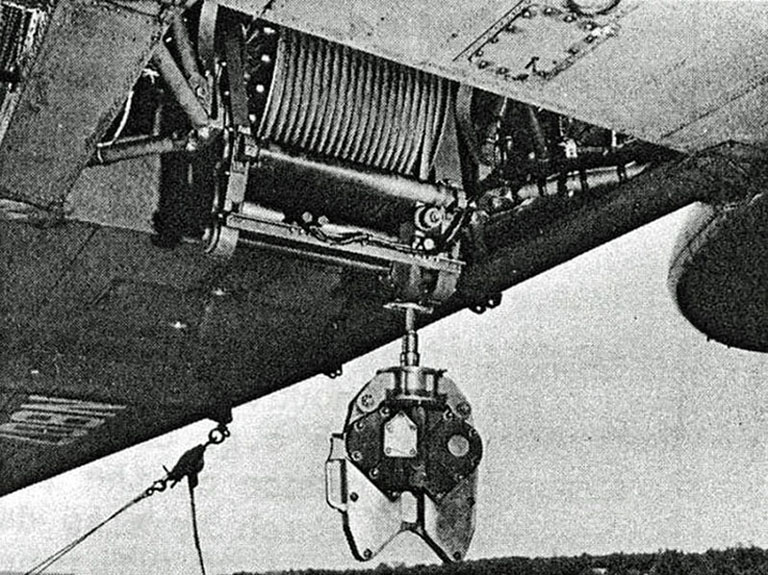
General Characteristics and Performance
Performance Standard Day at Sea Level | |
|---|---|
Maximum Speed (Vne) | 113 kts
|
Normal Cruise Speed | 100 kts
|
Range | 230 mi |
Absolute Hover Ceiling | 6,800 ft
|
Payload/Range | 8,100 lbs for 21.6 mi (40km) |
Rate of Climb | 2,900 fpm |
Weights | |
|---|---|
Design Gross Weight | 31,200 lbs |
Maximum Takeoff Gross Weight | 34,500 lbs |
Weight Empty | 19,613 lbs |
Payload | 12,800 lbs |
Maximum Fuel Load | 3,996 lbs |
General Data | |
|---|---|
Crew Seating Capacity | 2 |
Powerplant Ratings Standard Day at Sea Level | |
|---|---|
R2800-54 | 1900 NRP; 2100 MRP
|
Aircraft Dimensions | |
|---|---|
Main Rotor Diameter (Blade Tip Circle) | 72″
|
Number of Blades | 5
|
Blade Chord | 23.6 in |
Rotor Speed | 185 rpm |
Overall Length (w/ blades unfolded) | 87′ 11″ |
Overall Height (incl. tail rotor) | 21′ 8″ |
Vertical Clearance (Fuselage to Ground) | 7′ 8″
|
Related Models
The success of the S-60 experimental crane led to the development of the production S-64 Skycrane, also funded by the company. The major differences between the two were the use of turbine engines on the S-64, a nose wheel/main gear aft landing gear configuration to ease operations over large payloads, and the use of a third separate pilot’s station for the aft facing seat.
- by Art Linden
Related Articles
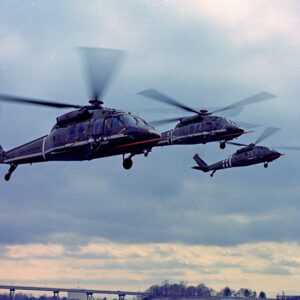
Bill Paul: Reflections on Sikorsky’s 100th Anniversary
Former Sikorsky President Bill Paul reflects on his career with Sikorsky, meeting Igor Sikorsky, and the Sikorsky Aircraft Company’s 100th anniversary.
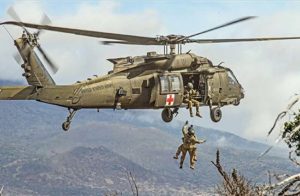
Sikorsky Lifts the Army
The U.S. Army saw the possibilities of the helicopter early in its development, thus beginning a relationship with Sikorsky Aircraft that continues to this day.
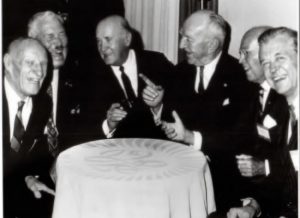
Predictions of a Pioneer
Igor Sikorsky’s predictions for air travel in general and for helicopters in particular have been largely realized or surpassed.
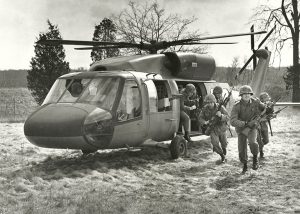
Ray Leoni: Recollections of a Sikorsky Junior Engineer
Ray Leoni recollects his 41-year career at Sikorsky Aircraft, beginning as a junior engineer and retiring as a Senior VP of Engineering and Advanced Programs.
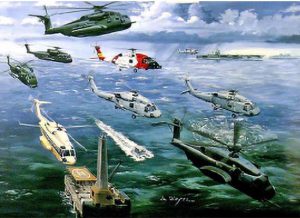
Sikorsky Aircraft Paintings by Andy Whyte
This issue of the newsletter is devoted to the aircraft designs and paintings by Andy Whyte, who had a 40 year career at Sikorsky Aircraft.
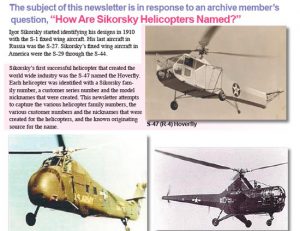
How Sikorsky Helicopters Are Named
The subject of this newsletter is in response to an archive member’s question, “How Are Sikorsky Helicopters Named?”
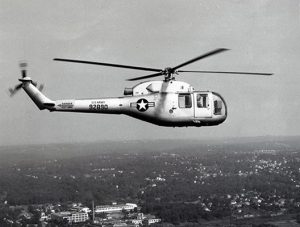
Sikorsky Aircraft in the 1960s
The decade of the 1960s gave birth to the era of Sikorsky turboshaft engine-powered helicopters.

